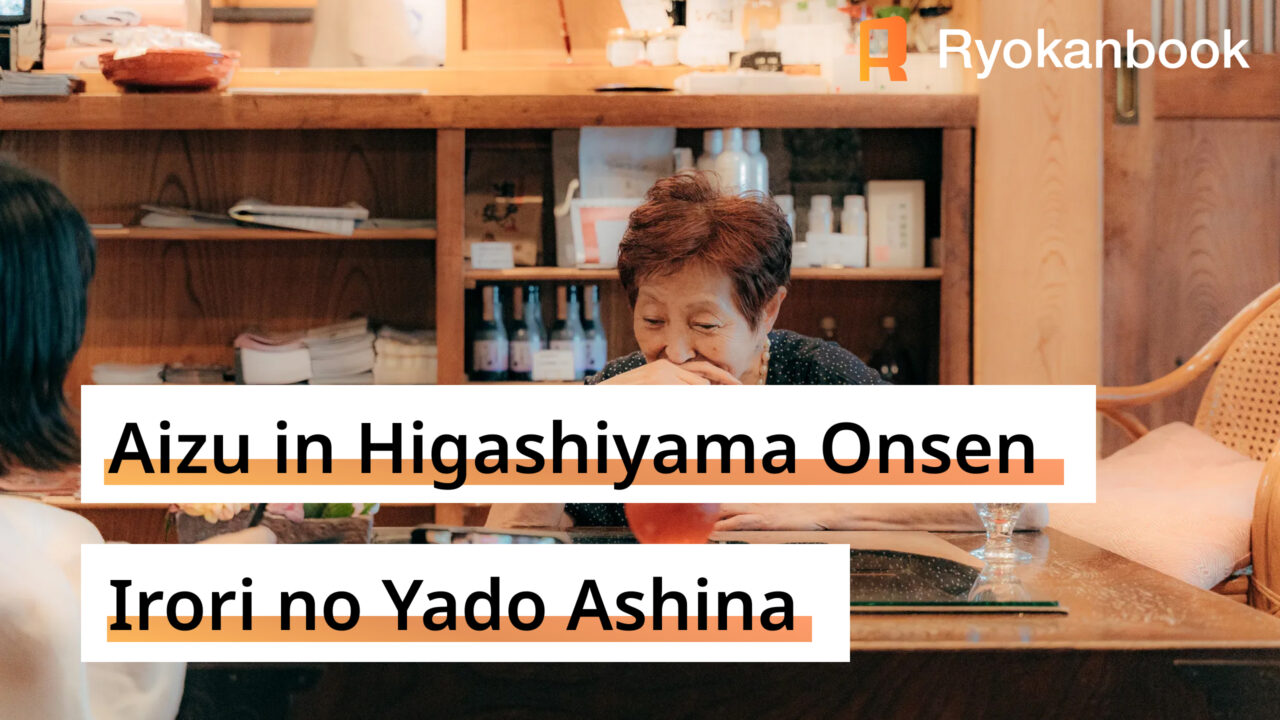Irori no Yado Ashina, located in Higashiyama Onsen in Aizuwakamatsu, Fukushima, is a popular inn full of traditional Japanese charm that has often been featured on TV.
I visited Irori no Yado Ashina, a traditional inn nestled in Higashiyama Onsen, Aizuwakamatsu.
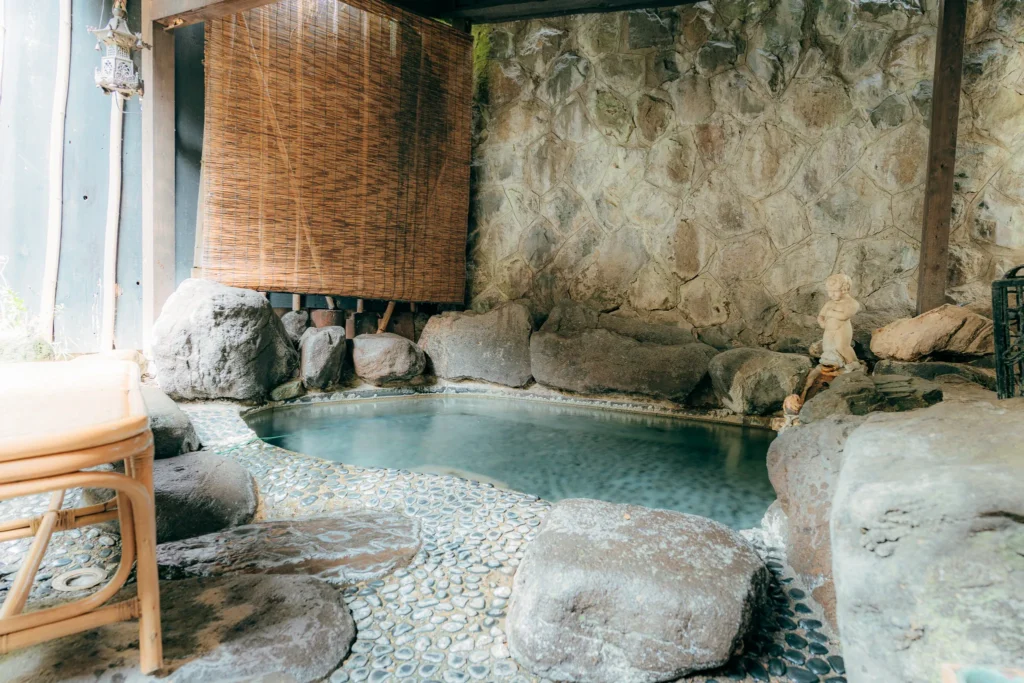
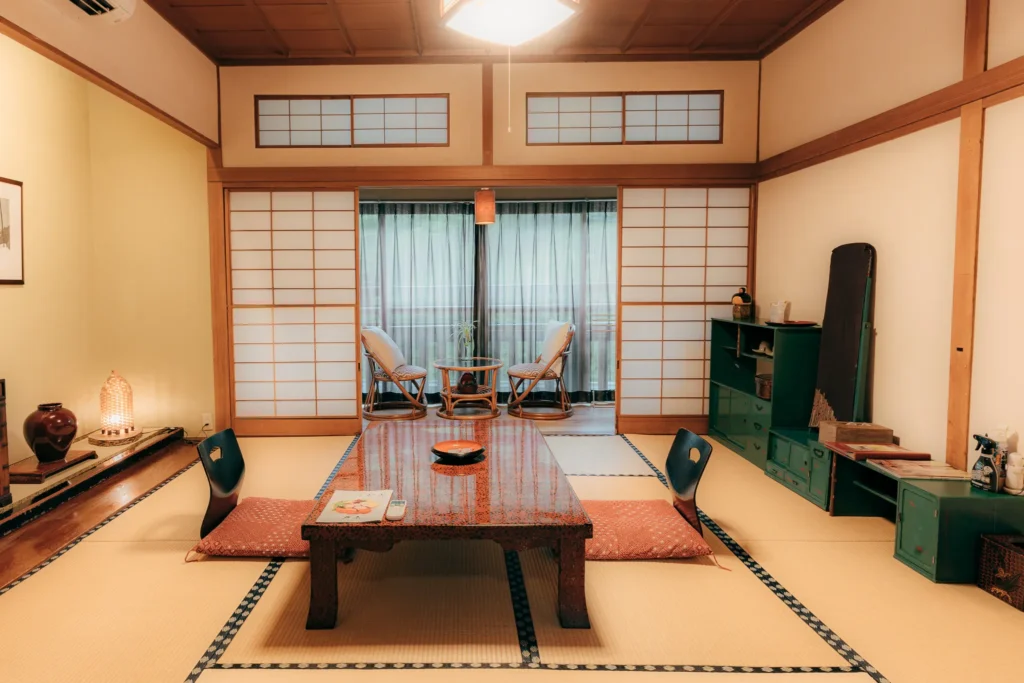
Inside, the retro Showa-era atmosphere, the local Aizu cuisine served around the irori —an open sunken fireplace once common in Japanese farmhouses—and above all, the heartfelt omotenashi hospitality make this inn truly special.
What left the deepest impression on me was my conversation with the proprietress, Michiyo Wada. During my stay, she shared memories with her late husband and her passion for running the inn—words that still stay with me.
In this article, I’ll share my full experience at Irori no Yado Ashina, along with some recommended sightseeing spots in Aizu that I visited the following day.
If you’re planning a trip to Aizu, and want a retro, heartwarming travel experience, this guide is for you.
▷View more details about this Ryokan
Hello, I’m Aoi, born and raised in Fukushima and now working at a travel company. Wanting more people to discover the beauty of my beloved hometown, I’d like to share with you the appeal of Irori no Yado Ashina, a charming inn in Higashiyama Onsen.
14:30 Meet up with friends at Aizuwakamatsu Station
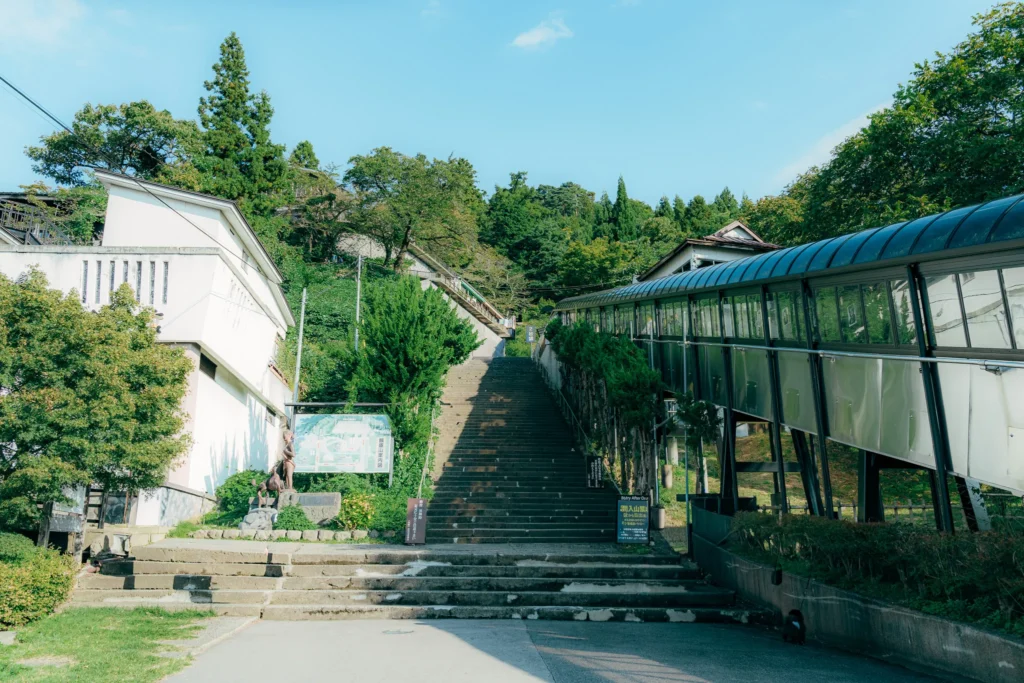
From Aizuwakamatsu Station, it’s about a 15-minute bus ride to Higashiyama Onsen, making it an easy and convenient destination.
From Tokyo Station, the trip to Aizuwakamatsu takes about 3 hours and 30 minutes by Shinkansen. If you have more time to spare, we recommend taking the Tobu Limited Express Revaty and the Aizu Railway Relay Train. Along the way, you can enjoy breathtaking views of valleys from the train windows—scenery that will turn your travel time into a memorable part of the journey. It’s an experience first-time visitors shouldn’t miss.
The inn is about a 7-minute walk from the Higashiyama Onsen bus stop. It’s an easy route—just follow the riverside road straight ahead, so there’s no need to worry about getting lost.
Along the way, you’ll walk down a path surrounded by greenery, and even before reaching the inn, you’ll already start to feel soothed by the atmosphere of this town.
15:00 Check In
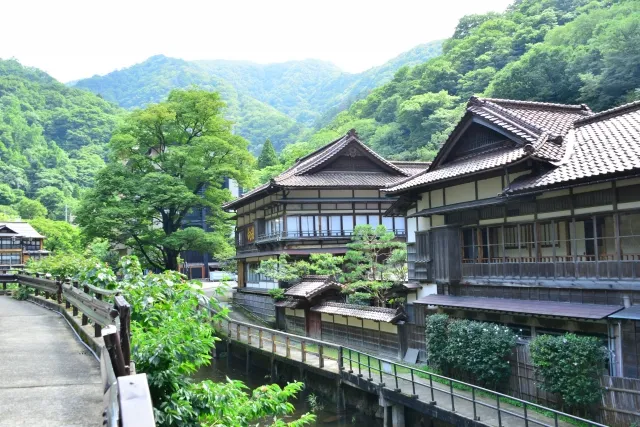
We finally arrived at Irori no Yado Ashina!
Our visit was in early August, when the fresh greenery was at its best. Surrounded by beautiful nature, the inn had a nostalgic and almost magical atmosphere—like something out of a Studio Ghibli film.
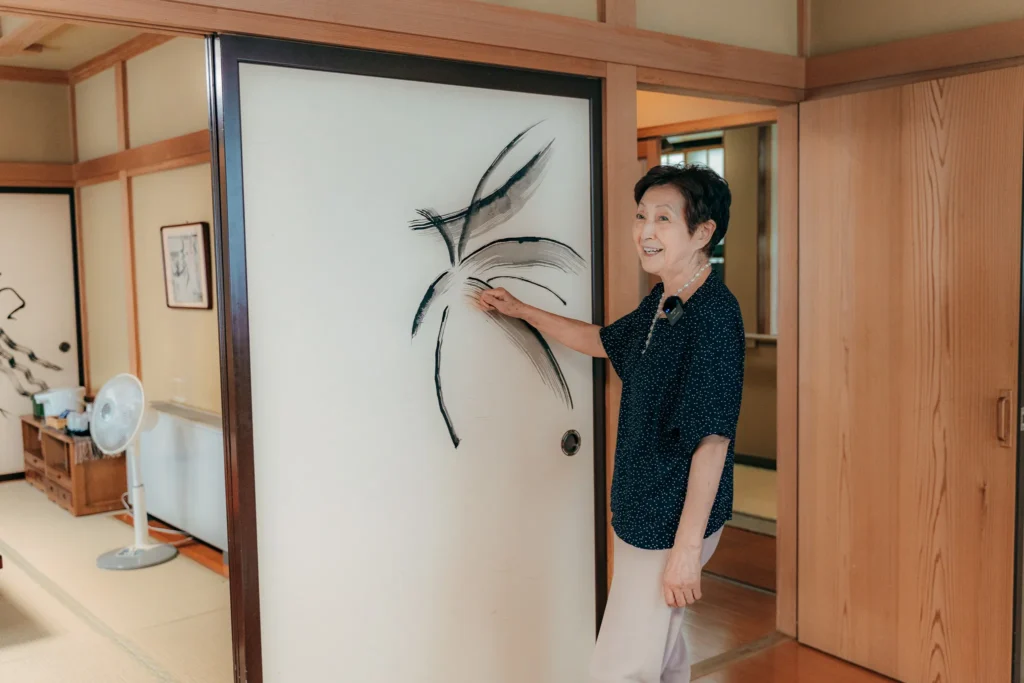
As soon as we opened the door, we were warmly welcomed by the young proprietress of Ashina.
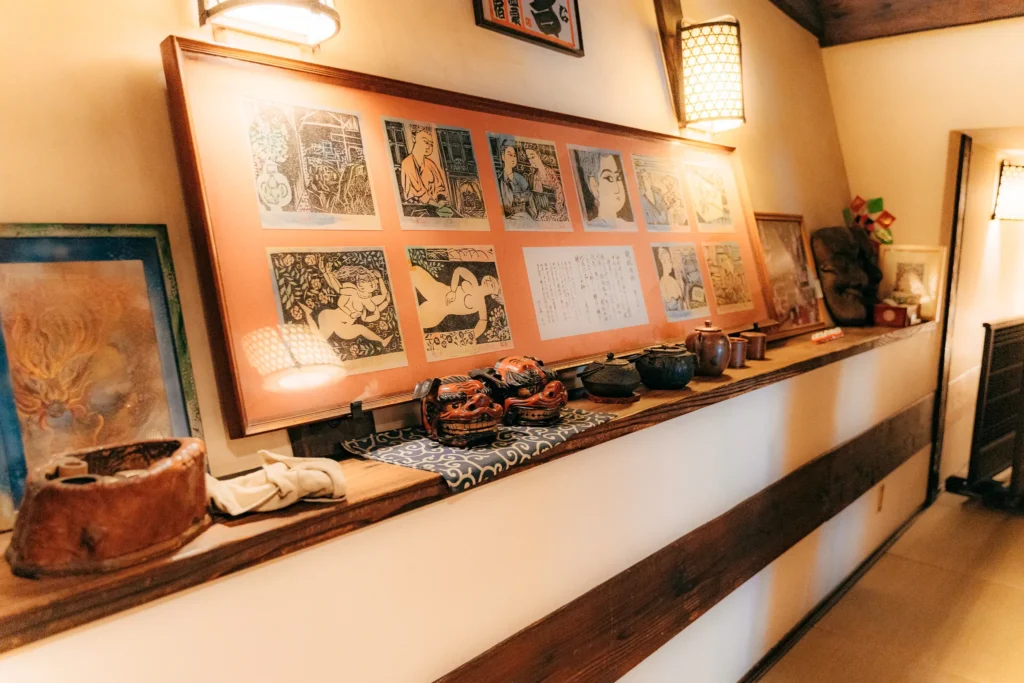
Stepping inside, I immediately felt that this was not just another Japanese-style inn.
Instead of the typical mix of Japanese and Western design, every piece of furniture and decoration seemed carefully chosen, creating the feeling of stepping back into the Showa era.
Aoi’s comment: Even my friend beside me said with excitement, ‘It looks just like a movie set!
15:30 Experience a Traditional Japanese Tatami Room | Feel Like a Famous Author
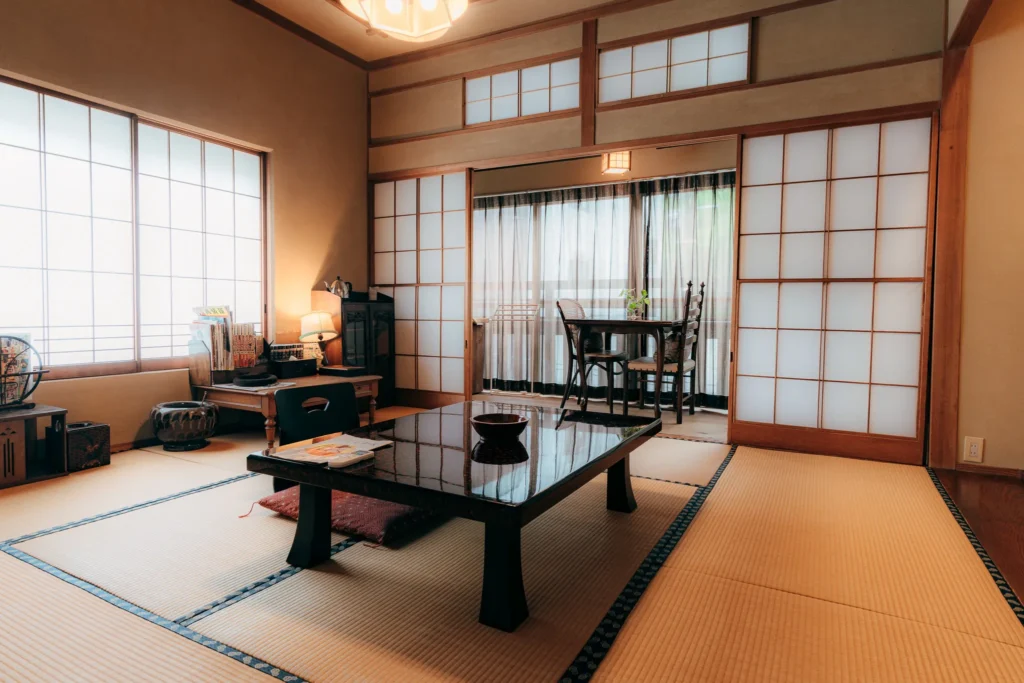
We stayed in the “Arare” room on the third floor.
The room is equipped with Wi-Fi and a washlet toilet, ensuring a comfortable stay. In winter, a cozy kotatsu (heated table) is set up, offering guests a different way to enjoy the seasons.
Inside, the Showa-era style furniture and décor create a calm, traditional Japanese atmosphere. It felt like visiting my grandmother’s house—nostalgic, familiar, and deeply comforting.
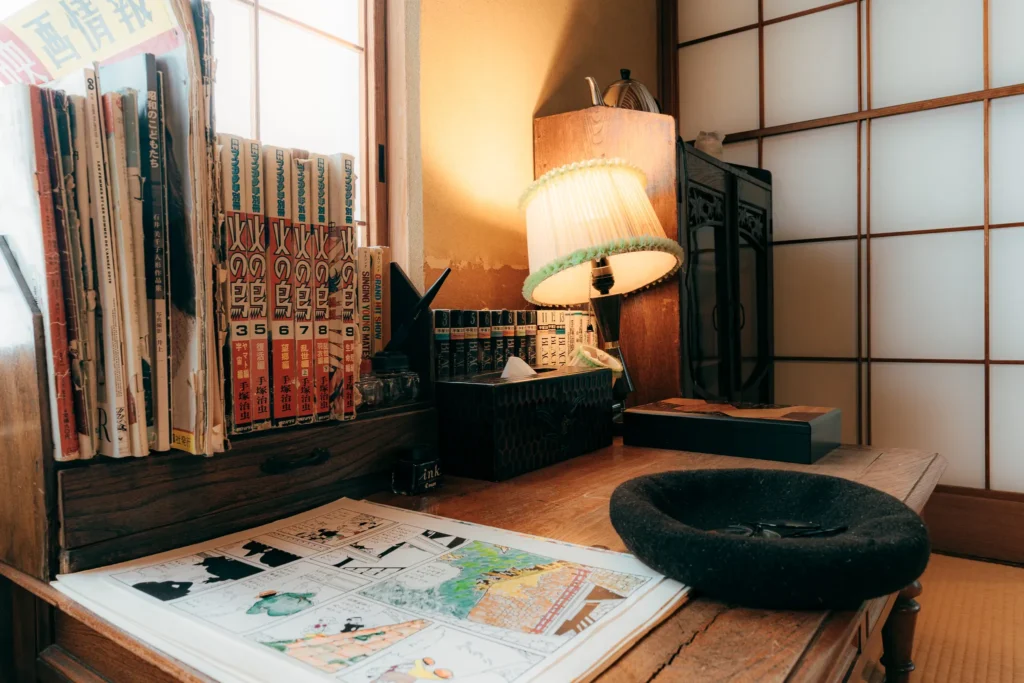
On the desk, I found many small items that reminded me of a writer’s atelier. Curious, I looked it up and discovered that Higashiyama Onsen actually has a connection with Osamu Tezuka, often called the ‘God of Manga’ and known worldwide as the creator of classics like Astro Boy.
In fact, some of his works even include scenes where characters travel through an underground passage said to link the ‘Sennin Bath’ at Harataki with Ashina. This very room, called Arare-no-ma, was created in honor of Tezuka’s ties to the area.
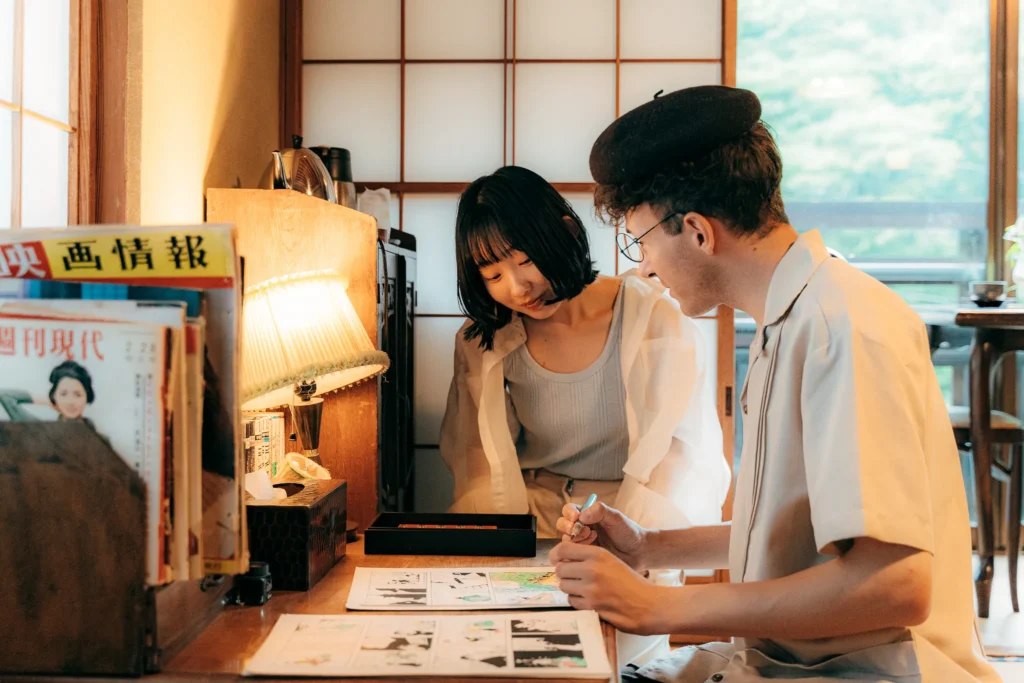
According to the proprietress, when this room was first planned, many around her opposed the idea, saying things like “It’s too late” or “It doesn’t fit the times anymore.”

But she stayed true to her vision, and thanks to her persistence, the room has now become the most popular choice among guests.
This room reflects the heartfelt spirit of the okami (female innkeeper). Inspired by Osamu Tezuka, it is filled with cultural elements that invite you to immerse yourself in history and storytelling. For those who love to let their imagination wander, it truly feels like a ‘room that nourishes the soul.’
Aoi’s comment: Along with manga manuscripts, pens, and paints, there were also fun ‘dress-up’ items like a writer’s cap and glasses. It was so exciting—I couldn’t help but feel like a manga artist myself
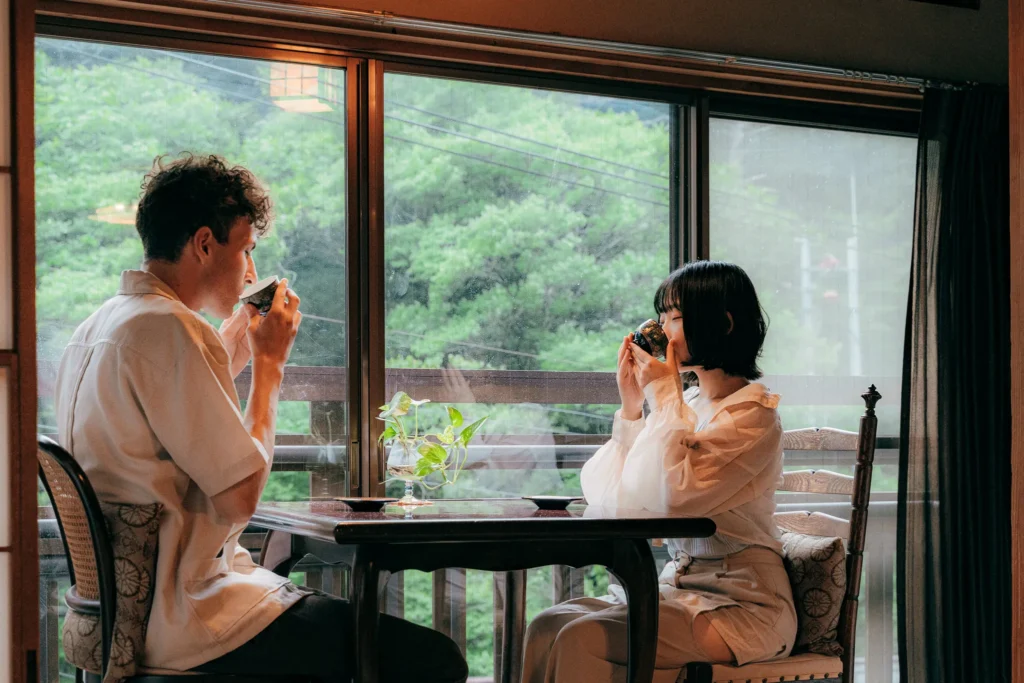
After enjoying the Tezuka-inspired atmosphere, we brewed some tea in the room and relaxed while gazing at the view.
With no need to watch the clock, we simply listened to the sounds of insects outside and savored the quiet, which reminded me of the true charm of staying at a ryokan.
Visiting sightseeing spots is wonderful, of course, but perhaps it’s these unhurried, natural moments that gently ease the fatigue of everyday life.

As I wandered down the hallway, I kept stopping to admire the many antiques and retro vintage items on display.
“They’re so beautiful… I wonder how she found them,” I thought to myself.
Curious, I finally gathered the courage to ask the proprietress—and her answer was not what I expected.
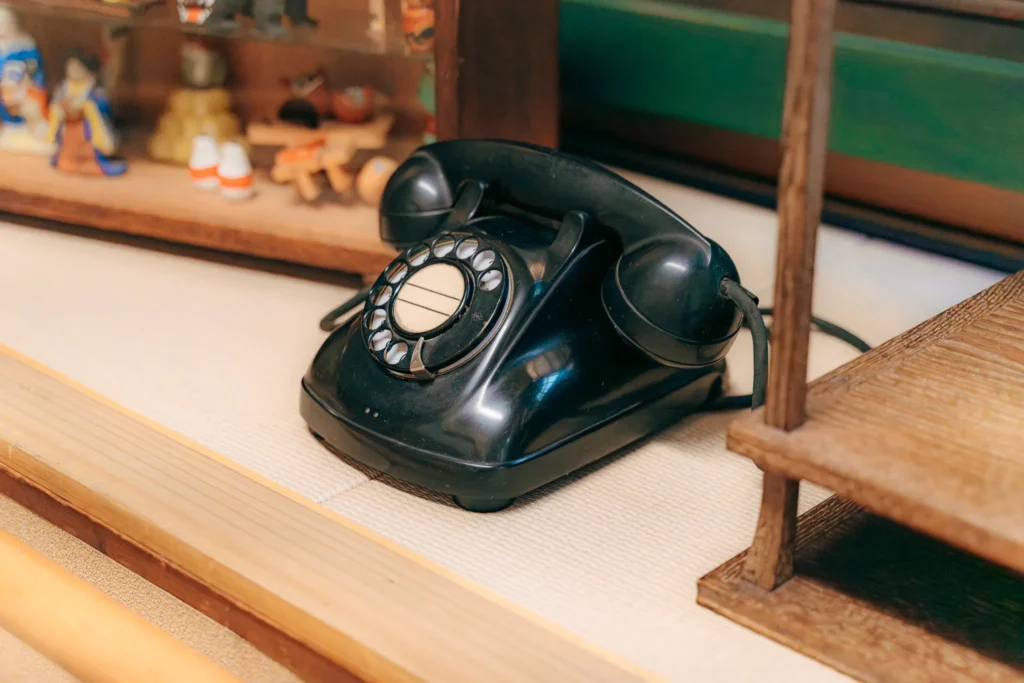
With a kind smile, the proprietress told me,
“I found these myself.”
In her eyes, I sensed a mix of nostalgia and affection.
It made me curious about the feelings behind running this inn, so I decided to continue listening to her story.
16:30 Chat with the Proprietress | The Hopes of Her Late Husband
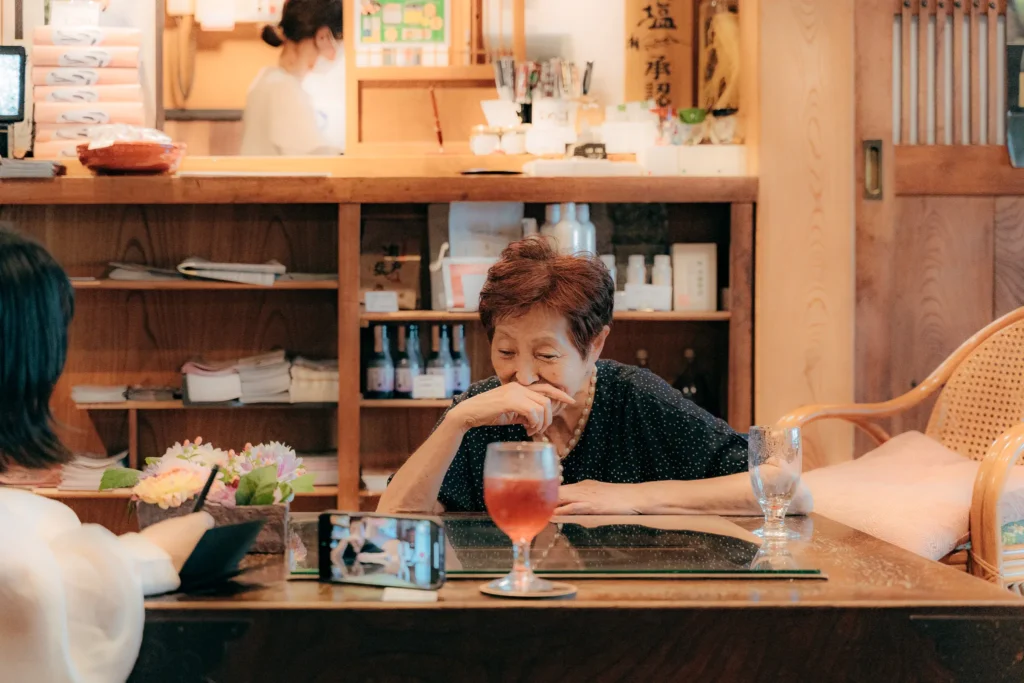
When proprietress Michiyo Wada first met her husband, she never imagined that she would one day be running a ryokan.
After their marriage, however, Ashina was founded based on her husband’s strong wish to open an inn here in Higashiyama Onsen. At the time, Michiyo, who had been working as a beauty consultant in Aizu, couldn’t picture herself managing a ryokan and recalls feeling reluctant about the idea.
What’s even more remarkable is that today she carries two roles—as both the okami (proprietress) and the president of the inn. Her husband, meanwhile, was less involved in the day-to-day operations and more active in supporting the development of the Higashiyama Onsen area as a whole. Still, when it came to establishing Ashina, he had clear and uncompromising ideas.

“Meals should always be served in the traditional irori (sunken hearth) style.”
“Items placed inside the inn should, as much as possible, honor and preserve the charm of ‘old but good’ traditions.”
While many inns in the Showa era were busy rebuilding with modern facilities, Ashina deliberately chose to grow “older and older.” This unique philosophy eventually bore fruit, creating a space filled with warmth and nostalgia that continues to capture the hearts of visitors.
Unmoved by trends and guided by his own convictions, her husband had a clear foresight for the inn’s future. And without Michiyo’s presence—believing in his vision and walking alongside him—Ashina would not be what it is today.
Even now, the inn carries within it the couple’s deep bond and passion for Higashiyama Onsen and their commitment to uplifting the community.
“The Okami is the best” — what lies behind those words
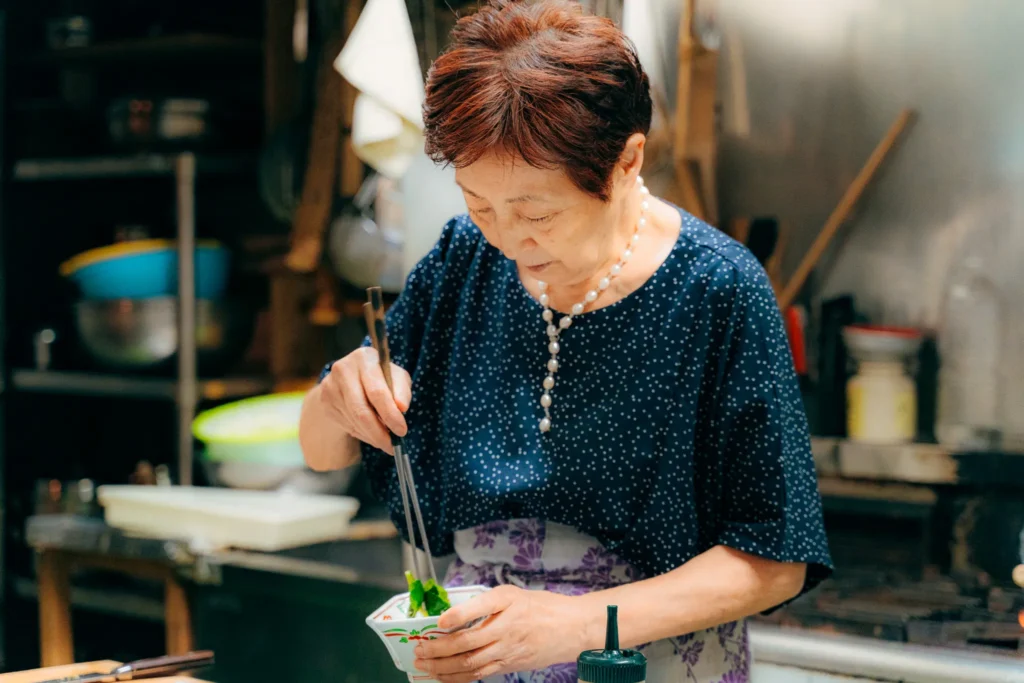
If you search “Irori no Yado Ashina Okami”, you’ll find an overwhelming number of reviews. And in almost every one, the same phrase appears: “The okami is the best.”
So many people love her, and in turn, she continues to pour love and care into everyone she meets. Perhaps her late husband had already seen that supporting this inn would become her true calling.
The okami, Michiyo, shared with me:
“Back then, he was always telling me to do this and do that. Honestly, it drove me crazy and I hated it. But once he was gone… well, you can’t even have an argument anymore. Now, I just want to carry on the things he treasured, to keep them alive in my own way.”
Running the inn must have come with many hardships and struggles, yet she continues to welcome guests with the same warm smile and sincerity, quietly holding her husband’s wishes close to her heart.
As our conversation went on, she suddenly broke into a radiant smile and said:
“The hot spring is what I’m most proud of. Off you go and enjoy it.”
Her voice was gentle and affectionate, almost as if she were speaking to family.It was my very first time soaking in the waters of Higashiyama Onsen, and with her words in mind, I headed to the large bath, full of excitement.
17:30 “Pure, Fresh Flowing Hot Spring”
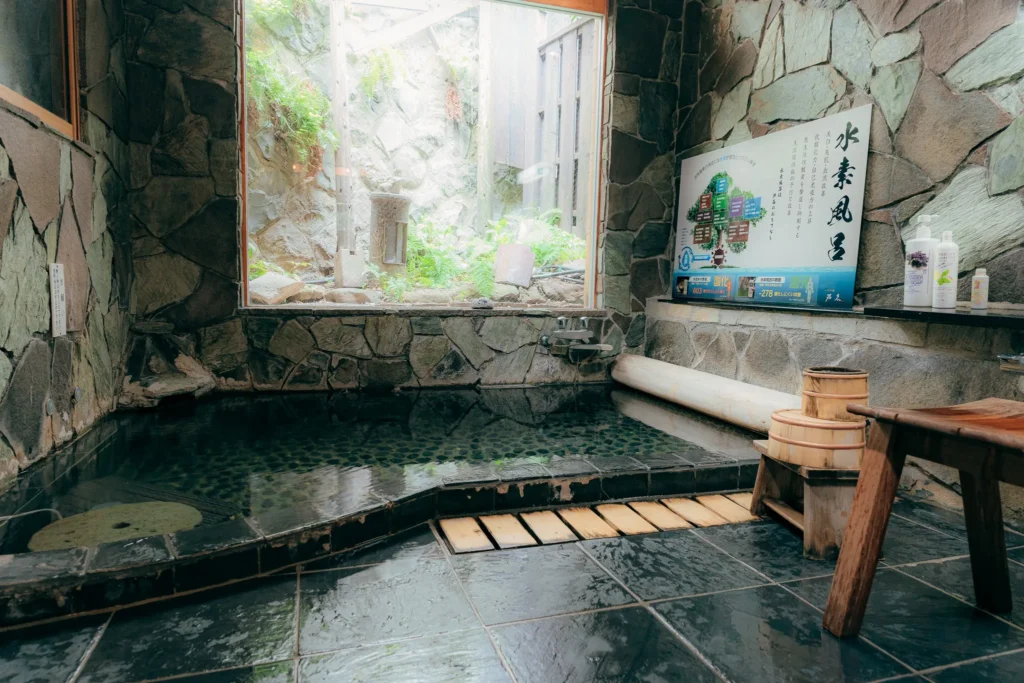
Ashina’s pride is its hot spring, with an abundant flow of 21.6 liters per minute at a source temperature of 56.1°C, poured straight into the bath at 100% natural flow. Truly a luxurious soak.

Even as someone who grew up in a hot spring town, I still can’t help but get excited about the words “direct from the source.”
The slightly hot, refreshing temperature of the water gently embraced my skin while warming me to the core.
Bath amenities are generally provided, but since the shampoo is a combined shampoo-and-conditioner type, I’d recommend bringing your own favorite if you’re particular about hair care.
“— Private Use Available —”
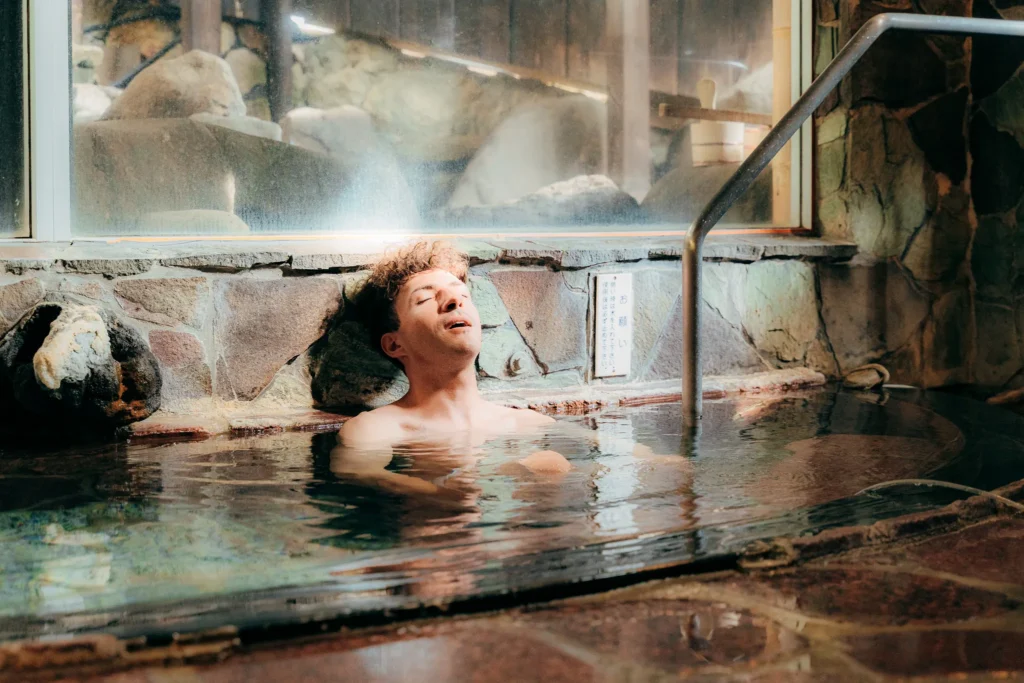
15:00~20:00 (separated by gender) 20:30~23:10(private use by room) 23:10~9:30(separated by gender)
There are times when you want to soak in a spacious public bath but may feel hesitant about being around others. At Ashina, each room has the option to reserve the large bath for private use, so you can relax with peace of mind.
Guests can choose a time slot between 8:30 p.m. and 11:10 p.m., and you’ll be asked for your preferred time when checking in.
18:30 Dinner Around the Irori

Dinner at Irori no Yado Ashina is a special kaiseki (traditional multi-course meal) served around the irori, a sunken hearth unique to Japan. The menu follows an ‘omakase’ style, meaning it is left to the chef’s choice and created each day from the freshest seasonal ingredients.
The dishes reflect the flavors of the mountain village where proprietress Michiyo Wada was born and raised—simple, nostalgic, and deeply comforting. From river fish grilled over charcoal, to seasonal mountain vegetables and small dishes made with local produce, every item is something you can only experience here.
Here are three highlights of the dinner experience:
Highlight ①: Ingredients Slowly Grilled Over Charcoal
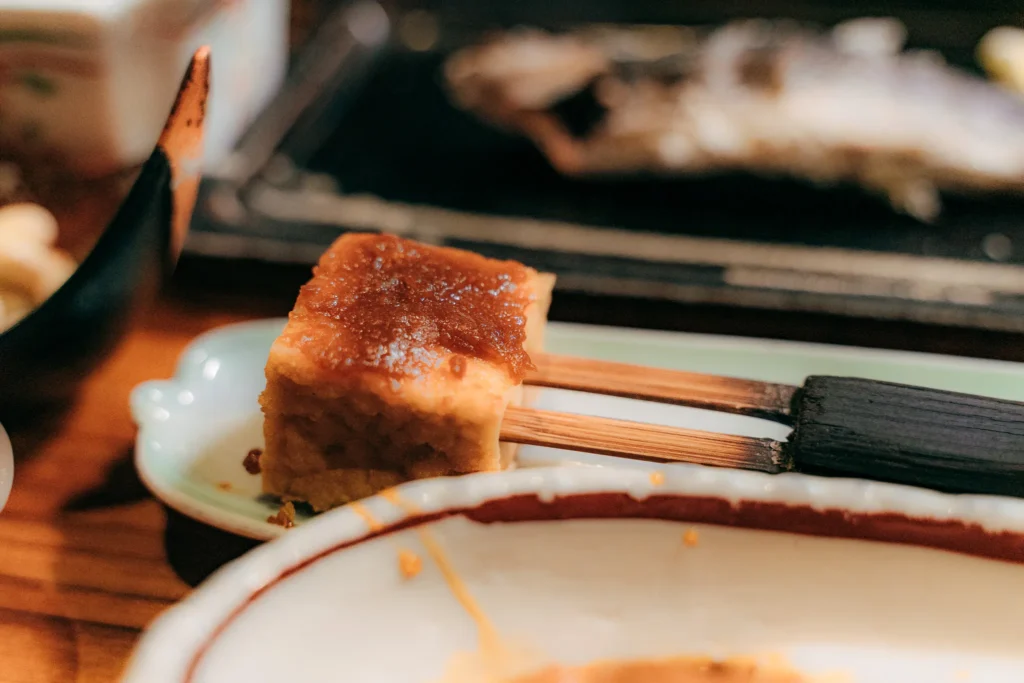
The first dishes we enjoyed were iwana (rock trout) and miso dengaku(skewers with miso glaze), slowly grilled over the irori hearth.
The iwana comes from Nishizuka Farm in Mogami, Yamagata Prefecture, carefully raised using the pure spring water of the Ou Mountains. Grilled over charcoal for about an hour, the fish becomes so tender that even the bones are soft, while the flesh remains plump and flavorful.
Watching the Ashina staff bring each dish from the hearth to the table one by one adds a special touch, turning the meal itself into a memorable, heartfelt experience.
Highlight ②: Choose Your Main Dish — Aizu Chicken, Aizu Beef, or Duck Shabu-Shabu

At dinner at Irori no Yado Ashina, you can choose one main meat dish from: Aizu chicken grilled on a crystal stone, Aizu beef shabu-shabu, Aizu beef steak, or duck shabu-shabu. Depending on the day’s ingredients, sometimes game meat is also offered, adding an extra layer of excitement to the meal.
That day, we chose the Aizu chicken grilled on a crystal stone. This local chicken is prized for its rich flavor and umami, cultivated using unique breeding and raising techniques. Grilled slowly on the crystal stone, the chicken had just the right firmness, and each bite released a full burst of flavor. The charcoal grilling removed excess fat, leaving a beautifully seared exterior while keeping the inside juicy and tender.
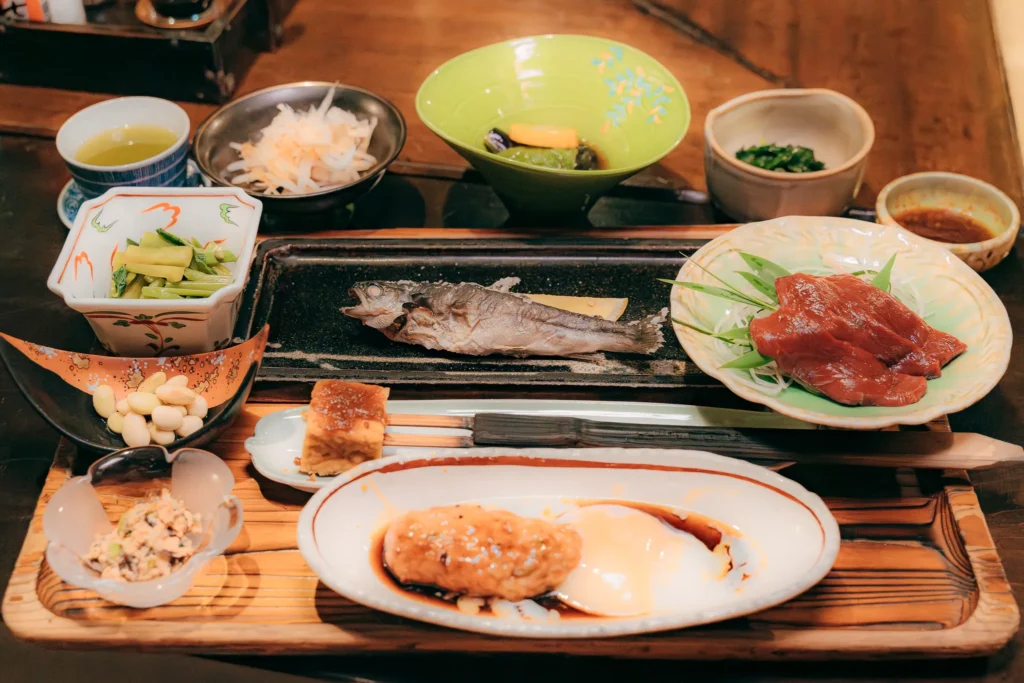
Another special feature of Ashina’s cuisine is that all seasonings—salt, soy sauce, and more—are completely additive-free and free of chemical ingredients. This allows guests to fully enjoy the natural flavors of locally sourced ingredients. It reflects proprietress Michiyo Wada’s strong commitment to offering only truly healthy and wholesome food.
Highlight ③: A Wide Selection of Drinks

No dinner around the irori hearth would be complete without Aizu’s local sake or organic wine. At Ashina, it’s customary to toast with sake to start the meal. In addition to sake sourced from breweries in the Aizu region, guests can choose organic wines that pair perfectly with the dishes, as well as a variety of soft drinks. A particularly nice touch is that the wines can be freely selected from the cellar, allowing you to find the perfect match for your meal!
“Aizu Honey Sake — A Must-Try!”

One drink we highly recommend trying is the Aizu Honey Sake — Mead & Wine. Made by carefully fermenting honey from Aizu’s specialty Tochi no Hana (horse chestnut flowers) for a full month, it is then blended with Niagra white wine from Nagano Prefecture to create a truly unique flavor.
This is a one-of-a-kind drink only available here, and it’s especially popular among women.
- Bottle: ¥2,000
- Glass: ¥800
8:30 “Breakfast by the Irori Hearth”

Not only dinner, but breakfast is also enjoyed around the irori hearth. Here’s a look at the luxurious morning menu.
Breakfast is served in a style featuring multiple small dishes, focusing on healthy, vegetable-centered fare. The cabbage and garlic chives were perfectly seasoned with just the right touch of salt. Nutritiously balanced, each dish is gentle on the body and a wonderful way to start the day.

The main dish was grilled mackerel with salt.
As it cooked, I could hear the sizzling and popping of the fish, and watching the fat gently bubble up already hinted at how delicious it would be. I couldn’t help but swallow in anticipation, eager for it to finish grilling.
When I finally took a bite, the mackerel, slowly cooked over charcoal, was plump and rich in fat, perfectly tender and wonderfully fragrant. The moment it touched my mouth, the savory flavors spread gently and satisfyingly.
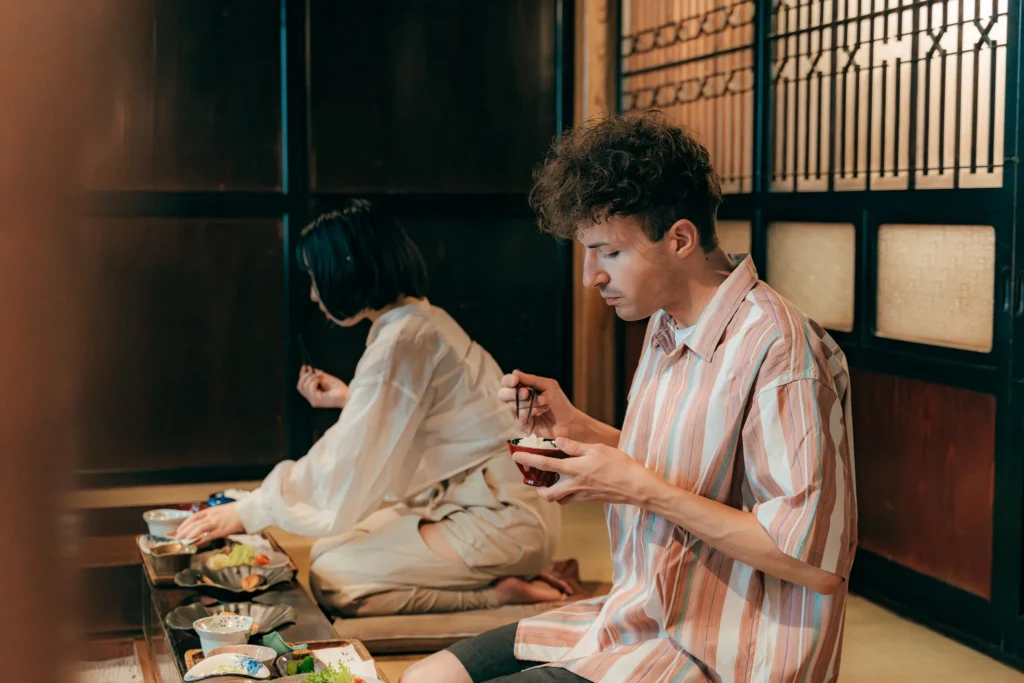
Enjoying breakfast around the irori hearth, with the scent of charcoal in the air, made for a morning completely unlike any ordinary meal—a truly special and heartwarming experience unique to Irori no Yado Ashina.
What left the strongest impression was, of course, the grilled salted mackerel. It was by far the most delicious I’ve ever had, so much so that I would want to come back just to taste this mackerel again.
More Than Just a Stay — A Cultural Experience
Having a meal around the irori hearth is something you rarely get to experience in modern Japan. I was deeply moved to see how this inn carefully preserves traditional Japanese culture and seamlessly weaves it into the stay.
Through this experience, I realized that staying at a ryokan isn’t just about lodging—it’s about immersing yourself in culture. I hope young travelers and visitors from overseas can also experience this uniquely Japanese hospitality and atmosphere firsthand.
10:00 To the Historic and Romantic ‘Aizu Sazaedo’”
After checking out, we headed to today’s destination: Aizu Sazaedo!
By car, it’s just about an 8-minute drive from the inn, but on foot it would take over 30 minutes, so we opted for a taxi this time.
Stepping out of the taxi, we were greeted by the serene landscape of Mount Iimori, quietly standing before us. This area is steeped in history, famously associated with the tragic story of the Byakkotai during the Boshin War at the end of the Edo period.

Nestled on the mountainside is our destination: Aizu Sazaedo.
What is Aizu Sazaedo?
Its official name is Entsu Sansodo, and it was built in 1796 (Kansei 8), making it a wooden structure with over 200 years of history.
The most remarkable feature is its double-helix interior, spiraling like a turban shell. There are no stairs, and the path is one-way, meaning those going up and those coming down never cross paths. Visitors can complete a full circuit without retracing their steps, making the experience both safe and smooth for worshippers.

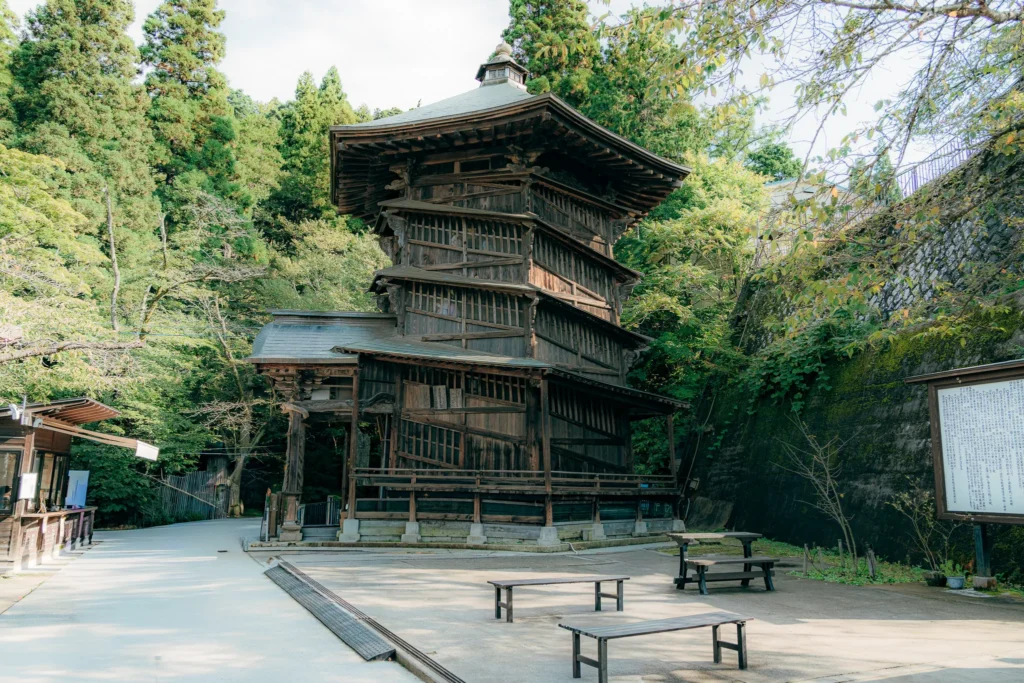
This unique structure is said to resemble the staircase of Chambord Castle in France, which is attributed to Leonardo da Vinci. Some say that its design may have been inspired by that famous spiral staircase.
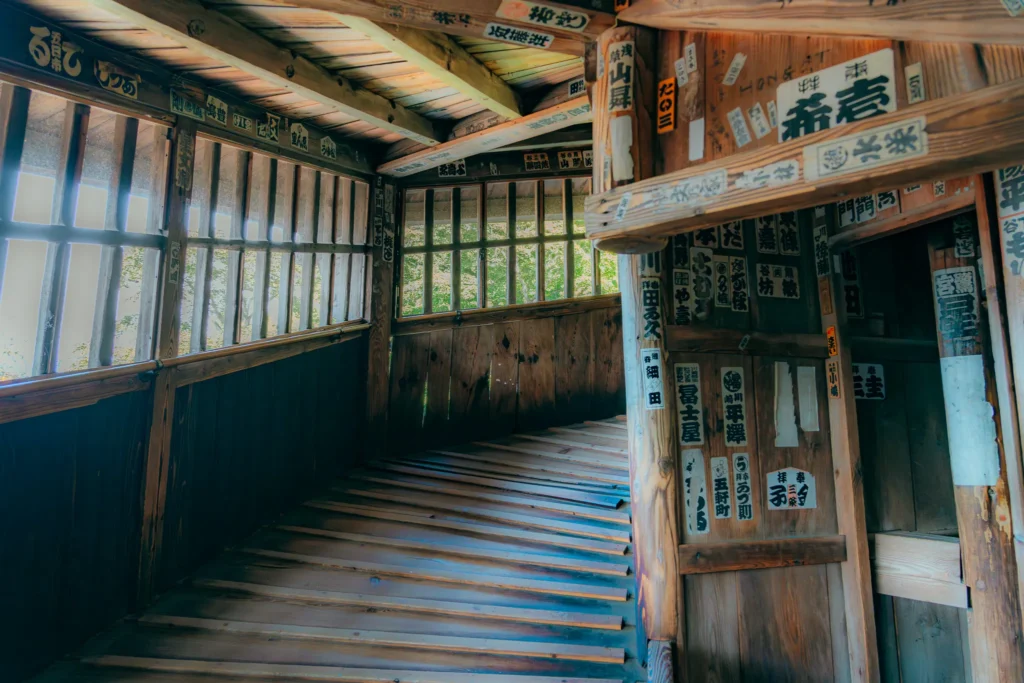
The moment we stepped inside, we heard the gentle creaking of the wooden floors. Even that sound seemed to echo the building’s long history.
As we slowly ascended the spiral ramp, a strange sensation washed over us—as if we were turning back time. It’s hard to believe that such a design was created during the Edo period. Once again, I was amazed by the sophistication of Japanese architectural craftsmanship.
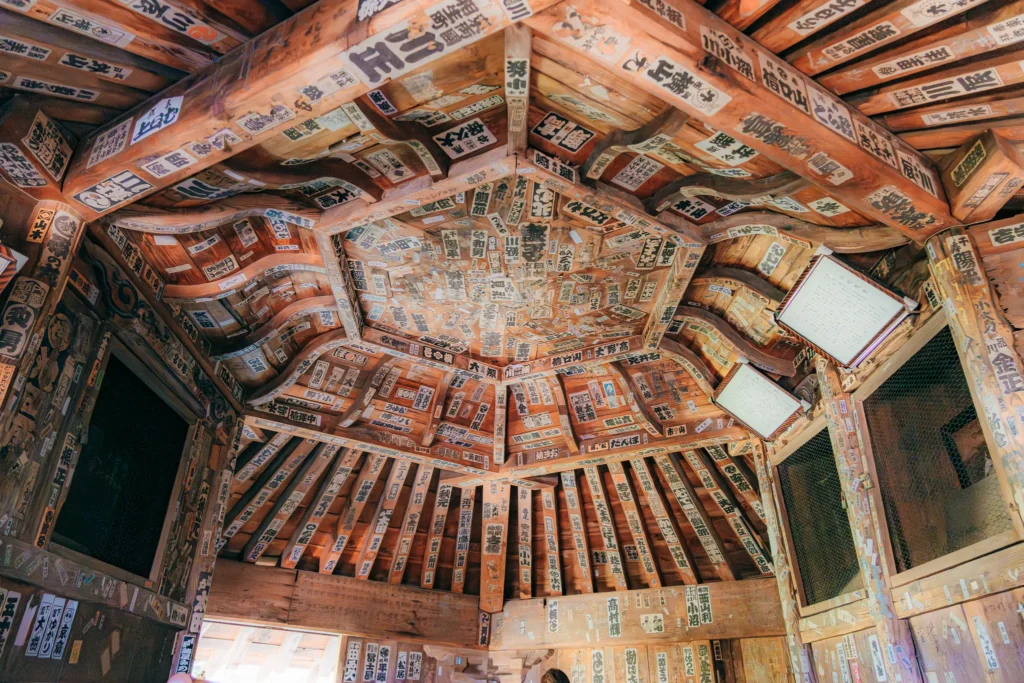
Looking up at the ceiling, I was struck by the countless senjafuda—votive stickers left by visitors over the years. It felt as if the presence of all those who had come before still lingered in the space.
Walking Through a Mystery of History and Architecture
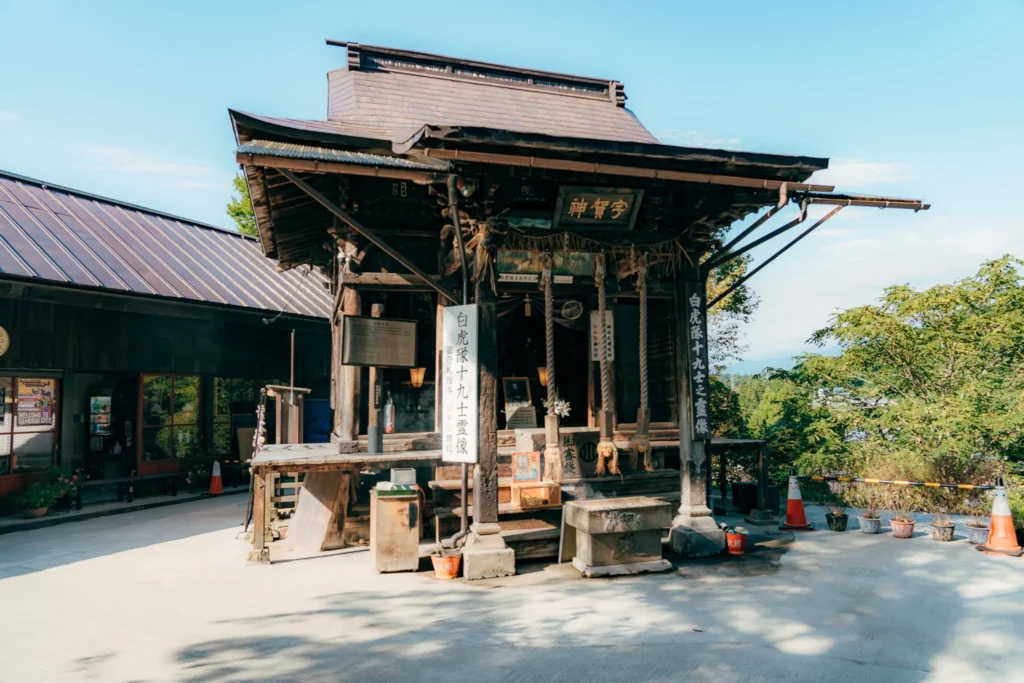
This site, where history and architectural beauty intertwine, is a must-visit for both architecture enthusiasts and history lovers. The completely separated one-way paths for ascending and descending were designed to allow worshippers to move safely without crossing paths—a rare architectural feature even in the world.
As I continued along the spiral, the structure, which I logically understood, suddenly felt mysterious. I found myself pausing to look up at the roof or peering through gaps to see the interior from different angles.
Here, visitors can experience the depth of “walking through history”, making it an unforgettable moment that stays with you long after leaving.
Conclusion | Reflections on Staying in Aizu & Higashiyama Onsen
What struck me most on this trip was the presence of proprietress Michiyo Wada.
She told me, “If you serve guests wholeheartedly, that feeling will always reach them.” Her words carried the weight of years supporting this inn, as well as the sincerity and dedication she brings to hospitality.
She also said, “Mistakes are part of hospitality.” This simple statement reflects her unpretentious nature and her unwavering commitment to genuinely caring for her guests. It’s clear that it is her heartfelt dedication that creates the warmth and charm of this inn.
Another realization from this trip was that the Aizu region still holds countless hidden treasures—unique inns and spots waiting to be discovered.
- Places like Irori no Yado Ashina, where culture and heartfelt service come alive.
- Sites like Aizu Sazaedo, where you can experience history itself through its unique architecture.
These “extreme cultural experiences” truly exist here in Aizu. I hope you’ll open the door to this remarkable region.
Why not start your journey with Irori no Yado Ashina and Aizu Sazaedo?
Written by Kawakami Larisa
Translation: Ryokanbook Editorial Team
▷Learn more about the Aizu Sazaedo
▷Discover more about Aizu
▷View Ryokans in Aizu

